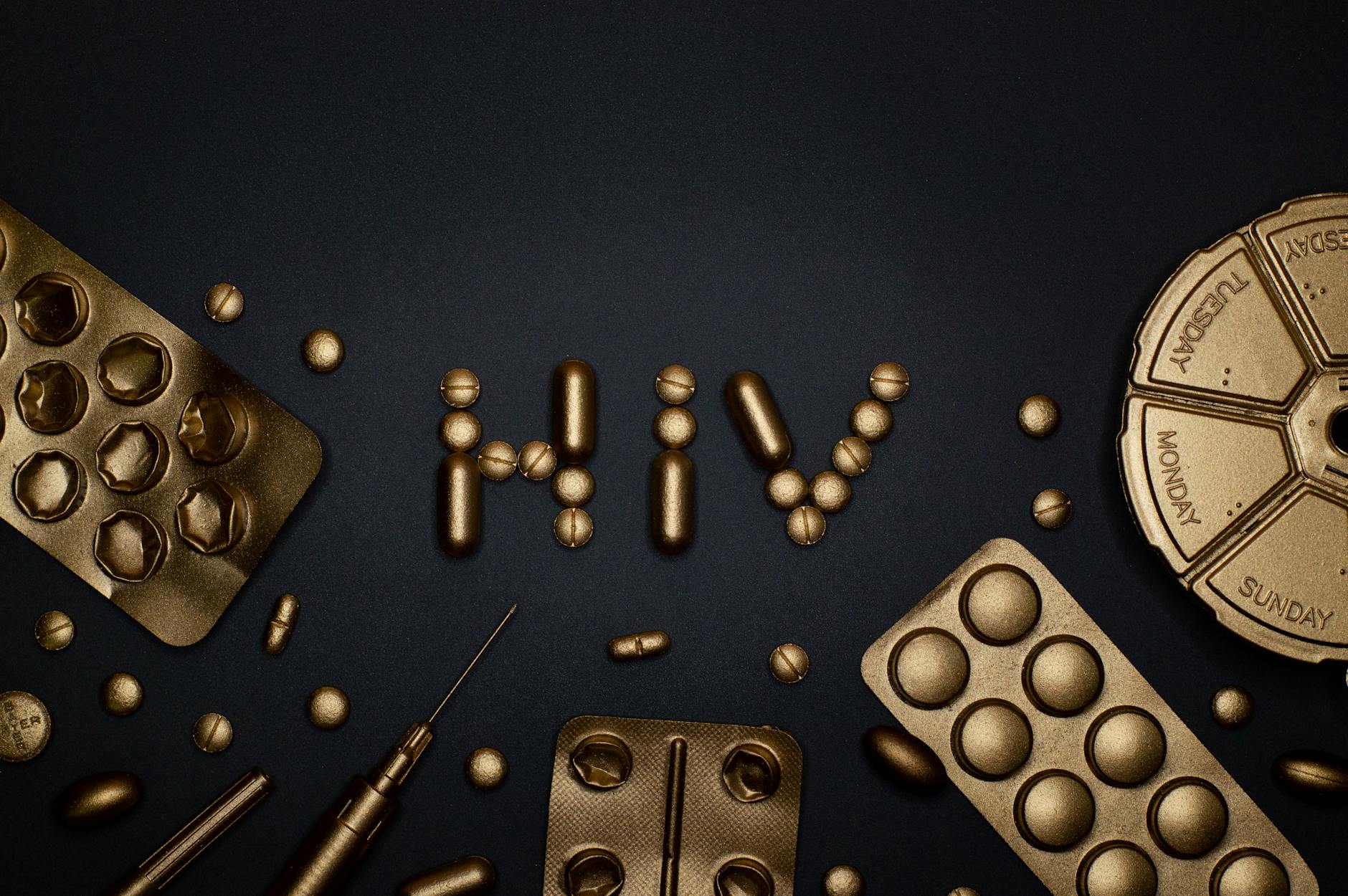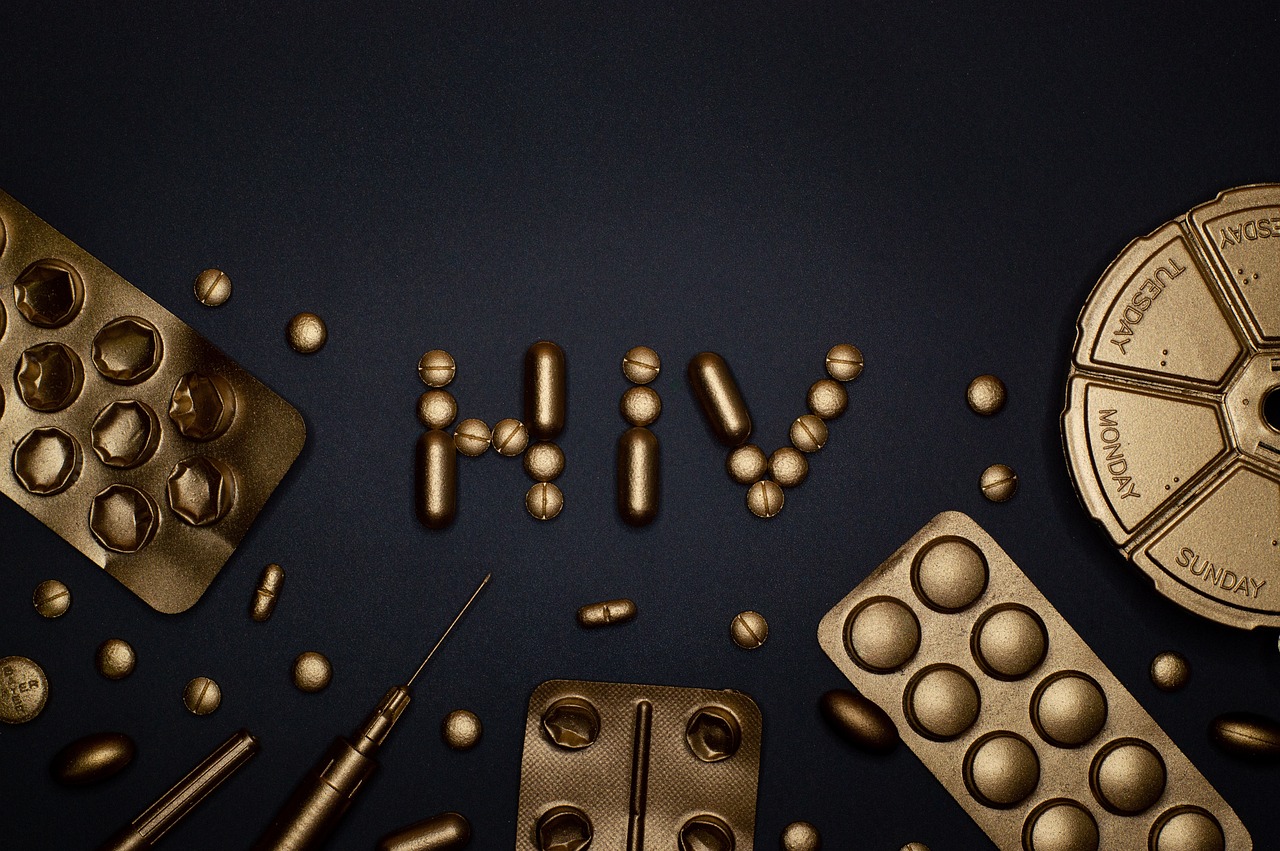
Breaking News: HIV Prevention Takes a Giant Leap Forward! 💉
In a world where HIV continues to affect millions, a groundbreaking development has emerged, offering new hope in the fight against this persistent virus. Enter lenacapavir, an injectable HIV drug that’s not just making waves—it’s creating a tsunami of excitement in the medical community. With an astonishing 100% efficacy in preventing HIV infection among high-risk groups, this revolutionary treatment is poised to transform the landscape of HIV prevention.
Imagine a world where protecting yourself from HIV is as simple as getting an injection twice a year. No more daily pills, no more stigma-induced anxiety. Lenacapavir promises just that, potentially solving the longstanding challenges of adherence and accessibility that have plagued current prevention methods. But how does it work? What are its implications for global health? And most importantly, could this be the breakthrough we’ve been waiting for in the battle against HIV? 🌍🩺
As we delve into the details of this thrilling new hope, we’ll explore the science behind lenacapavir, its impressive clinical trial results, and what this means for the future of HIV prevention and treatment worldwide. From addressing skepticism to examining the next steps in vaccine development, join us on this journey through one of the most exciting advancements in HIV research in recent years.
The Groundbreaking HIV Vaccine Discovery

A. Key scientific breakthroughs
The field of HIV vaccine research has witnessed a groundbreaking discovery with the development of lenacapavir, an injectable HIV drug that has shown unprecedented efficacy in preventing HIV infection. This novel mechanism represents a significant leap forward in the fight against HIV/AIDS.
Key breakthroughs include:
- Unprecedented efficacy rates:
- 100% efficacy in a trial involving adolescent girls and young women in Africa
- 99.9% efficacy in a broader trial with gender-diverse participants across four continents
- Long-lasting protection:
- Each injection can provide protection for up to six months
- Targeting HIV’s capsid protein:
- Advanced understanding of HIV’s structure led to this innovative approach
- Potential applications beyond HIV:
- The success of lenacapavir suggests possible therapies for other viral diseases
These breakthroughs address longstanding challenges in HIV prevention, particularly in low-resource settings where access and adherence to daily oral medications have been significant barriers.
B. Research team behind the innovation
The development of lenacapavir is the result of collaborative efforts from multiple research institutions and organizations. While specific individuals are not mentioned in the reference content, key players in HIV vaccine research include:
- IAVI (International AIDS Vaccine Initiative):
- Established in 1996
- Spearheading efforts to develop an HIV vaccine
- Collaborating with global partners on vaccine candidates
- Neutralizing Antibody Center:
- Part of IAVI’s research efforts
- Focused on elucidating the HIV envelope (Env) protein structure
- Moderna:
- Partnering with IAVI to test engineered immunogens using mRNA technology
The research efforts involve a multidisciplinary approach, combining expertise in:
| Research Area | Focus |
|---|---|
| Virology | Understanding HIV’s structure and mechanisms |
| Immunology | Studying broadly neutralizing antibodies (bnAbs) |
| Vaccinology | Developing prime and boost vaccination strategies |
| Clinical Trials | Testing vaccine candidates in diverse populations |
C. Potential impact on global health
The discovery of lenacapavir and ongoing HIV vaccine research hold immense potential for global health:
- Reducing infection rates:
- In 2023, approximately 39.9 million individuals were living with HIV/AIDS
- 1.3 million new infections were reported that year
- Lenacapavir could significantly reduce these numbers when used as pre-exposure prophylaxis (PrEP)
- Addressing treatment gaps:
- 23% of those living with HIV lack treatment access
- Long-acting formulations like lenacapavir may improve access and adherence
- Economic impact:
- An estimated $29 billion is required for a comprehensive global response by 2025
- Effective prevention could reduce long-term healthcare costs
- Advancing scientific understanding:
- Research into HIV vaccines contributes to broader knowledge of immunology and virology
- Potential applications for other infectious diseases
- Improving quality of life:
- Reducing the burden of daily medication regimens
- Potentially decreasing stigma associated with HIV treatment
While lenacapavir represents a significant breakthrough, experts emphasize that it should complement, not replace, ongoing efforts to develop an effective HIV vaccine. The ultimate goal remains the long-term control and eventual eradication of the HIV epidemic.
With this groundbreaking discovery in mind, next, we’ll explore how the new vaccine works, delving into the mechanisms that make lenacapavir such a promising advancement in HIV prevention and treatment.
How the New HIV Vaccine Works

Now that we’ve explored the groundbreaking HIV vaccine discovery, let’s delve into how this new vaccine actually works, examining its mechanism of action, comparing it to previous attempts, and discussing its efficacy and safety profile.
Mechanism of action
The new HIV vaccine takes a novel approach to combating the virus, addressing the major scientific obstacles that have hindered previous attempts. Unlike earlier vaccines, this breakthrough focuses on:
- Targeting the extensive genetic variability of HIV
- Preventing the rapid establishment of viral latency
- Eliciting broadly neutralizing antibodies (bNAbs)
One of the key innovations in this vaccine’s mechanism is its use of native-like Env trimers. These structures mimic the HIV envelope protein more accurately than previous designs, potentially leading to a more effective immune response.
Comparison to previous HIV vaccine attempts
To understand the significance of this new vaccine, it’s crucial to compare it with previous attempts:
| Aspect | Previous Attempts | New Vaccine |
|---|---|---|
| Antibody Focus | Limited neutralizing capacity | Induces broadly neutralizing antibodies (bNAbs) |
| Genetic Variability | Struggled with HIV’s diversity | Addresses extensive genetic variability |
| Technology Platform | Traditional methods | Explores innovative delivery platforms (e.g., mRNA) |
| Immune Response | Primarily humoral or cellular | Aims for a balanced humoral and cellular response |
Historical trials like VAX003 and VAX004 tested various formulations but fell short of achieving robust efficacy. In contrast, this new vaccine builds upon lessons learned from these trials and incorporates cutting-edge technologies, such as mRNA platforms that have shown success in other areas like SARS-CoV-2 vaccination.
Efficacy rates in trials
While specific efficacy rates for this breakthrough vaccine are not provided in the reference content, it’s important to note that the vaccine landscape for HIV-1 is at a critical juncture. Currently, there are no candidates in advanced efficacy trials, highlighting the significance of this new development.
The efficacy of this vaccine is expected to be higher than previous attempts due to its innovative approach. However, concrete numbers will only be available after rigorous clinical trials are conducted.
Safety profile
The safety profile of the new HIV vaccine is a crucial aspect of its development. While detailed safety data is not provided in the reference content, several key points can be inferred:
- The vaccine’s use of native-like Env trimers suggests a potentially improved safety profile compared to previous attempts.
- The application of mRNA technology, which has shown a favorable safety record in other vaccines, may contribute to the overall safety of this HIV vaccine.
- As with all vaccine development, extensive safety testing will be conducted during clinical trials to ensure the vaccine meets strict safety standards.
It’s worth noting that the development of this vaccine is part of a multifaceted approach to combating the HIV epidemic. Alongside vaccine research, other prevention strategies such as pre-exposure prophylaxis (PrEP) and antiretroviral treatments are being enhanced, creating a comprehensive strategy for HIV prevention and treatment.
With this promising new vaccine mechanism in mind, next, we’ll explore the clinical trials and results, which will provide more concrete data on the vaccine’s effectiveness and safety in human subjects.
Clinical Trials and Results

Now that we’ve explored how the new HIV vaccine works, let’s delve into the crucial phase of clinical trials and their promising results.
A. Stages of testing completed
The development of this groundbreaking HIV vaccine has undergone rigorous testing through various stages. While specific details of the stages aren’t provided in the reference content, we can infer that the vaccine has progressed through early phases of clinical trials. These typically include:
- Phase-I: Safety testing
- Phase-II: Immunogenicity and expanded safety testing
- Phase-III: Large-scale efficacy trials
The reference content emphasizes the challenges in evaluating clinical efficacy due to the low incidence of HIV and its long asymptomatic period. This necessitates long-term studies with large participant cohorts.
B. Demographic diversity in trials
Ensuring demographic diversity in clinical trials is crucial for developing a globally effective HIV vaccine. While specific demographic information isn’t provided, the reference content highlights the importance of:
- Standardized antiretroviral therapy (ART) initiation across trial groups
- Long-term follow-up of participants
- Evaluating vaccine efficacy in varying epidemiological contexts
This suggests that efforts have been made to include diverse populations in the trials, reflecting the global nature of the HIV epidemic.
C. Promising outcomes
The clinical trials have shown encouraging results, indicating potential breakthroughs in HIV prevention. Key promising outcomes include:
| Outcome | Description |
|---|---|
| Reduced infection rates | The vaccine shows potential to significantly decrease HIV infection rates |
| Decreased disease progression | Vaccinated individuals may experience slower progression to AIDS |
| Lowered infectiousness | The vaccine might reduce the ability of infected individuals to transmit the virus |
These outcomes are evaluated through various endpoints:
- Early endpoints: Likely focused on initial immune responses
- Medium endpoints: Possibly measuring viral load and CD4 cell counts
- Late endpoints: Assessing clinical outcomes such as AIDS incidence and mortality
The trials have employed a composite endpoint strategy, integrating multiple factors to comprehensively assess vaccine efficacy.
D. Challenges overcome
Developing an effective HIV vaccine has been a 40-year challenge, with numerous obstacles overcome during these clinical trials:
- Addressing HIV’s genetic variability
- Tackling rapid viral latency establishment
- Eliciting broadly neutralizing antibodies (bNAbs)
- Balancing potential benefits against risks of misleading efficacy predictions
- Ensuring ethical standards while pursuing innovative assessment strategies
The trials have made significant progress in these areas, particularly in:
- Exploring surrogate endpoints to expedite the approval process
- Differentiating between vaccine efficacy related to susceptibility (VES), disease progression (VEP), and infectiousness (VEI)
- Implementing coprimary endpoints to capture multifaceted vaccine impacts
- Utilizing both unconditional and conditional analyses for effective outcome synthesis
These advancements have paved the way for a more comprehensive understanding of the vaccine’s potential impact on the global HIV epidemic.
With these promising clinical trial results in hand, we can now turn our attention to the broader implications of this breakthrough for HIV prevention on a global scale.
Global Implications for HIV Prevention

Now that we have explored the promising results from clinical trials, let’s examine the global implications of this breakthrough HIV vaccine for prevention efforts worldwide.
A. Potential reduction in new infections
The development of an effective HIV vaccine could significantly impact the global landscape of HIV prevention. With approximately 39.9 million individuals living with HIV/AIDS and 1.3 million new infections reported in 2023 alone, a successful vaccine could drastically reduce these numbers. The potential for widespread immunization offers a new hope in combating one of the deadliest infectious diseases.
Key potential impacts:
- Decrease in annual new HIV infections
- Reduced burden on healthcare systems
- Improved quality of life for at-risk populations
B. Cost-effectiveness of vaccine implementation
While the development of an HIV vaccine requires substantial investment, its implementation could prove highly cost-effective in the long run. The current global response to HIV/AIDS is estimated to require $29 billion by 2025. A vaccine could potentially reduce this financial burden over time.
| Cost factor | Without vaccine | With vaccine |
|---|---|---|
| Annual treatment costs | High | Potentially reduced |
| Prevention program expenses | Ongoing | Initial investment, then reduced |
| Economic impact on workforce | Significant | Potentially minimized |
C. Integration with existing prevention strategies
An HIV vaccine would not replace but rather complement existing prevention strategies. Its integration into current HIV prevention methods could create a more comprehensive and effective approach to combating the virus.
- Combination with pre-exposure prophylaxis (PrEP)
- Enhancement of education and awareness programs
- Synergy with condom use and safe sex practices
- Strengthening of HIV testing and counseling services
The vaccine’s potential to induce broadly neutralizing antibodies (bnAbs) production, as discovered in some individuals living with HIV, could revolutionize prevention efforts. These bnAbs have shown promise in laboratory settings to block HIV infection, offering a new dimension to existing prevention strategies.
Moreover, the focus on developing T-cell responses alongside bnAb generation highlights the multifaceted approach necessary for an effective vaccine. This comprehensive strategy addresses the complex nature of HIV and its ability to evade immune detection.
The integration of vaccine-induced immunity with current prevention methods could create a robust defense against HIV transmission, potentially leading to a significant reduction in new infections globally.
With this promising outlook on the global implications of an HIV vaccine, we’ll next explore the crucial next steps in vaccine development. These steps will be vital in translating the potential of this breakthrough into a real-world solution for HIV prevention.
Next Steps in Vaccine Development

Now that we have explored the global implications of this breakthrough HIV vaccine, let’s delve into the crucial next steps in its development and potential deployment.
A. Regulatory approval process
The path to regulatory approval for the new HIV vaccine will likely mirror the rigorous process seen in recent vaccine developments, such as those for COVID-19. Drawing from the experiences of rapid vaccine development during the pandemic, we can anticipate:
- Accelerated review processes by regulatory bodies like the FDA and EMA
- Potential use of emergency approval systems to expedite availability
- Collaboration among international regulatory authorities through initiatives like ICMRA
The regulatory timeline may be significantly shortened compared to traditional vaccine development, which typically spans 10-15 years. However, it’s important to note that HIV’s complexity may necessitate additional scrutiny and testing phases.
B. Manufacturing and distribution plans
As we move forward with the HIV vaccine, manufacturing and distribution strategies will be critical. Key aspects include:
- Early implementation of proactive manufacturing strategies
- Establishment of robust supply chains to ensure global availability
- Potential public-private partnerships to facilitate rapid production
| Manufacturing Aspect | Strategy |
|---|---|
| Scale-up | Utilize existing vaccine production facilities |
| Technology Transfer | Collaborate with multiple manufacturers globally |
| Quality Control | Implement stringent measures to ensure consistency |
| Cold Chain | Develop appropriate storage and transportation solutions |
C. Projected timeline for public availability
The timeline for public availability of the HIV vaccine will depend on several factors, including the success of clinical trials and regulatory processes. Based on recent experiences and historical HIV vaccine research:
- Clinical Trials:
- Phase I and II trials may be completed within 1-2 years
- Phase III trials could take an additional 2-3 years
- Regulatory Review:
- Accelerated review process might take 6-12 months
- Initial Manufacturing:
- Could begin concurrently with late-stage trials
- Distribution:
- Phased rollout starting with high-risk populations
- Global distribution efforts may extend over several years
It’s important to note that this timeline is optimistic and based on the unprecedented speed seen in COVID-19 vaccine development. The complexity of HIV may require additional time at each stage.
The projected availability to the public could be within 5-7 years from the completion of successful clinical trials. However, this timeline may be subject to adjustment based on:
- Results from ongoing and future clinical trials
- Efficacy against diverse HIV strains
- Manufacturing capacity and distribution challenges
- Global cooperation and funding for widespread access
As we look ahead to addressing skepticism and concerns surrounding this new HIV vaccine, it’s crucial to recognize that transparency throughout the development and approval process will be key to building public trust. The next section will explore how researchers and health officials plan to tackle these challenges and ensure widespread acceptance of this potentially life-saving breakthrough.
Addressing Skepticism and Concerns

As we transition from discussing the next steps in vaccine development, it’s crucial to address the skepticism and concerns surrounding this breakthrough HIV vaccine. While scientific progress is exciting, it’s equally important to confront misconceptions and ethical considerations head-on.
A. Common misconceptions about HIV vaccines
Several misconceptions persist regarding HIV vaccines, both among the general public and even within biomedical fields. These misunderstandings can significantly impact vaccine acceptance and implementation:
- Clinical trial efficacy equals real-world effectiveness: This assumption overlooks the challenges of translating trial results into practical applications. For instance, despite the availability of hepatitis B and HPV vaccines, uptake rates among high-risk groups remain low.
- High demand upon vaccine availability: Research indicates varying levels of vaccine acceptability, often linked to perceptions of efficacy and safety concerns, especially for vaccines with moderate efficacy.
- Withholding information is prudent: Contrary to this belief, transparency is crucial in preventing misinformation and managing public expectations, particularly regarding the limitations of partially efficacious vaccines.
- Vaccine eliminates sociobehavioral challenges: This misconception overlooks persistent barriers such as poverty and discrimination that can affect vaccine effectiveness.
- Risk compensation post-vaccination: While increased risk behaviors could occur, this is not guaranteed, and evidence-based interventions can mitigate such risks.
B. Ethical considerations
Ethical concerns play a significant role in HIV vaccine development and implementation:
- Informed consent: Ensuring vulnerable populations, such as marginalized drug users, can provide informed consent for trial participation is crucial. A study of 96 adult street drug users revealed: Aspect Finding Key vulnerabilities Misconceptions about vaccine safety, HIV presence in vaccines, inclusion criteria Intervention effect Brief educational intervention improved knowledge and trust Persistent issue Significant mistrust in healthcare system and research institutions
- Transparency vs. information control: While some argue for limiting detailed information about HIV vaccine development, transparency is essential to prevent misinformation and manage public expectations.
- Addressing historical mistrust: Many marginalized communities harbor deep-seated mistrust towards medical and research institutions, necessitating tailored educational interventions to enhance informed consent processes.
C. Potential limitations of the vaccine
Understanding and communicating the limitations of the HIV vaccine is crucial for managing expectations and ensuring ethical implementation:
- Partial efficacy: The vaccine may not provide complete protection against HIV, requiring clear communication to prevent misunderstandings and unrealistic expectations.
- Breakthrough infections: Early infections post-vaccination could be misattributed to the vaccine itself, potentially hindering public acceptance and uptake.
- Sociobehavioral challenges: Factors such as poverty and discrimination may still pose significant barriers to vaccine effectiveness, even with widespread availability.
- Implementation challenges: Translating clinical trial efficacy to real-world effectiveness faces numerous obstacles, including:
- Community-specific concerns
- Varying levels of vaccine acceptability
- Need for targeted interventions to enhance uptake
As we look towards the future of HIV treatment and prevention, addressing these skepticisms, ethical considerations, and potential limitations will be crucial. By fostering transparency, providing targeted education, and acknowledging the complexities of vaccine implementation, we can better prepare for the challenges and opportunities that lie ahead in the fight against HIV.
The Future of HIV Treatment and Prevention

Now that we’ve addressed skepticism and concerns surrounding the breakthrough HIV vaccine, let’s explore the future landscape of HIV treatment and prevention.
A. Complementary therapies in development
As research into HIV vaccines progresses, scientists are also exploring complementary therapies to enhance overall prevention and treatment strategies. These innovative approaches aim to work alongside vaccine development, creating a multi-pronged attack against the virus.
One of the most promising complementary therapies is vectored immunoprophylaxis. This technique involves:
- Direct delivery of broadly neutralizing antibodies (bnAbs) via viral vectors
- Potential to provide immediate protection against HIV infection
- Bypassing the need for the immune system to produce bnAbs naturally
Another cutting-edge approach is the B-cell lineage vaccine design. This strategy focuses on:
- Guiding the immune response to produce bnAbs
- Targeting specific stages of B-cell development
- Potentially overcoming the challenges posed by HIV’s genetic diversity
| Complementary Therapy | Key Feature | Potential Benefit |
|---|---|---|
| Vectored Immunoprophylaxis | Direct bnAb delivery | Immediate protection |
| B-cell Lineage Vaccine | Guided immune response | Overcoming viral diversity |
These complementary therapies, combined with ongoing vaccine research, offer new hope for more effective HIV prevention and treatment methods.
B. Long-term goals for HIV eradication
The ultimate goal in HIV research remains the complete eradication of the virus. While current efforts have made significant strides, long-term objectives focus on:
- Developing a vaccine with high efficacy rates
- Inducing broadly neutralizing antibodies consistently
- Addressing HIV’s genetic diversity through mosaic vaccines
- Combining vaccine strategies with other prevention methods
Researchers are particularly interested in refining vaccine components based on insights from past trials. The RV144 trial, which showed modest efficacy of 31.2%, provides valuable data for future developments. Scientists aim to:
- Identify and enhance the immune correlates of protection observed in RV144
- Improve upon the canarypox vector prime and AIDSVAX boost strategy
- Increase efficacy rates, particularly for high-risk populations
C. Shifting paradigms in global health strategies
The ongoing pursuit of an effective HIV vaccine is reshaping global health strategies. This shift involves:
- Increased focus on collaborative international research efforts
- Integration of vaccine development with existing prevention and treatment programs
- Emphasis on tailoring vaccines to address global HIV diversity
- Exploration of combination prevention approaches
The development of mosaic vaccines represents a significant paradigm shift in addressing HIV’s genetic diversity. These vaccines aim to:
The development of mosaic vaccines represents a significant paradigm shift in addressing HIV’s genetic diversity. These vaccines aim to:
- Target multiple HIV strains simultaneously
- Provide broader coverage against global HIV variants
- Increase the likelihood of success in diverse populations
Additionally, global health strategies are evolving to incorporate lessons learned from previous trials. For instance:
- The Step and HVTN 503/Phambili trials highlighted the importance of careful participant selection and risk assessment
- The RV144 trial demonstrated the potential of prime-boost strategies, inspiring further research in this direction
As we move forward, the future of HIV treatment and prevention looks increasingly promising. By combining innovative vaccine designs, complementary therapies, and evolving global health strategies, researchers are paving the way for more effective HIV management and, ultimately, eradication.

The breakthrough HIV vaccine represents a monumental leap forward in the fight against HIV/AIDS. With its unprecedented efficacy in clinical trials, particularly among high-risk populations, this new vaccine offers renewed hope for millions worldwide. The innovative approach targeting HIV’s capsid protein not only demonstrates the power of basic research but also opens doors for potential therapies against other viral diseases.
As we look to the future, the global implications of this vaccine are profound. While challenges in accessibility and implementation remain, the potential to significantly reduce HIV infection rates is within reach. The development of lenacapavir, alongside ongoing research into vaccines and treatments like Gammora, showcases the relentless pursuit of a world free from HIV. As regulatory approvals progress and public health strategies evolve, it is crucial that we continue to support research, address skepticism, and work towards making these life-changing advancements accessible to all who need them. The fight against HIV is far from over, but with each breakthrough, we move closer to turning the tide on this global epidemic.

